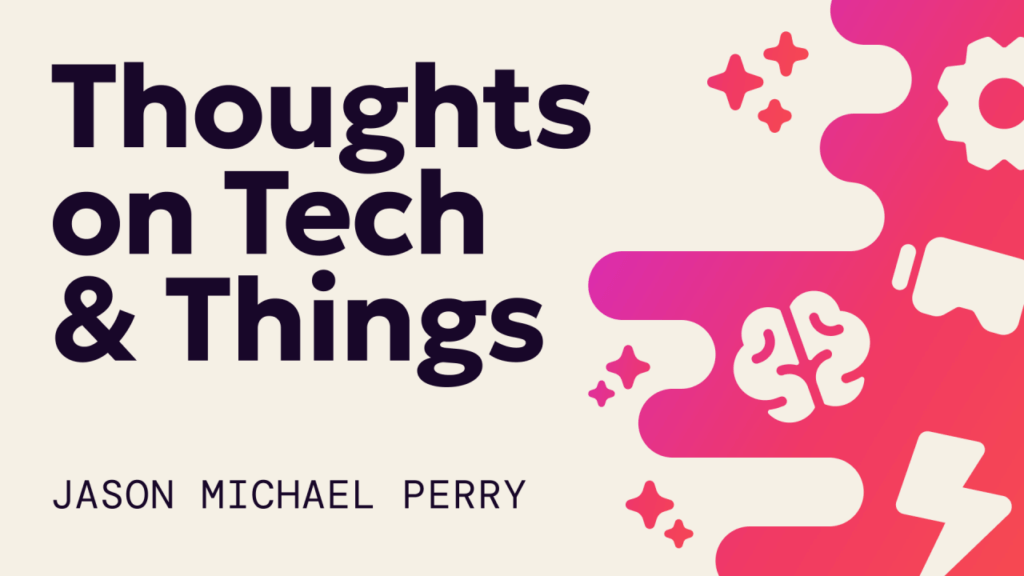Issue #05: Passwords suck, and it’s about time we do something about it.

Howdy,
Passwords suck. Passwords have sucked for a very long time, but how bad they suck is getting out of control, and it needs to change stat!
If you’re like me, you work at a company that uses single sign-on (SSO). It’s great. We all have one password to rule them all, which must be updated monthly. We know forcing password changes leads to password recycling or iterating on the exact words or phrases until you can’t remember your darn password. When you remember, passwords make our multi-device experiences horrible. I changed my password for Google Workplace in the web browser, and suddenly my phone’s email application can’t get a new message, my calendar is out of sync, and even my Tesla needs me to authenticate and log back in.
All of this is ridiculous! Despite all the effort, we put into safeguarding our accounts, it turns out that our security measures are less effective than we assume. Passwords suck at doing what they are supposed to do, keep our accounts safe, so we keep adding to passwords to try and make them more secure. Today most accounts need two-factor authentication with special apps with auth codes or password managers that generate strong passwords that no human could write or remember.
Aggregator apps like Mint and banking apps also need these same passwords to connect to other financial platforms forcing us to enter our super secure passwords into third-party apps that log in to our super safe and secure accounts on other platforms. The whole thing needs to be fixed so companies exist to connect platform a to platform b. But even with this, who knows if we can trust the best companies and password managers to manage our passwords?

PassKey feels like a natural solution to our problem, and thankfully, the adoption of big tech players like Google, Apple, and Amazon makes me feel confident that this password hellscape we’re living in might be behind us.
What is PassKey? Glad you asked. PassKey is a FIDO standard that replaces passwords with crypto key pairs that a keychain or authenticator app can store and retrieve when needed. Luckily, Windows, macOS, iOS, and Android have these authenticator apps built into the operating system, and can even allow these passkeys to sync across devices behind the scenes securely.
To use a passkey, the authenticator requires a user to unlock with a master password or more secure biometrics like a fingerprint or facial scan. As a Mac user, my keychains sync across my laptops, tablets, and phones, allowing me to log in to any passkey-enabled website or application using FaceID or TouchID. Once you try, it feels magical. Personal studies show that removing the weight and stress of memorizing thousands of passwords can add at least a few years to our lifespans. For that reason, I will do my duty to advocate that we all drop this bad password habit and move to adopt PassKey. Do what I’m doing at Mindgrub and make your applications and interfaces PassKey first. Don’t ask your users; make it the new default. They’ll thank you later. You’re giving them years of life back.
-jason

I’m a huge fan of Daring Fireball blogger John Gruber and look forward to his annual in-person Apple World Wide Developer Conference (WWDC) event, The Talkshow Live From WWDC. This year’s event was truly one-of-a-kind, with four high-ranking Apple employees cycling through to talk all things WWDC and delve deeper into Vision Pro.
Here are my observations:
👉 “We wanted it to be useful. We wanted to build an incredibly powerful tool, not a toy” – Apple sees other headsets like HTC Vive or Meta’s Quest line of VR headsets as toys and not true competition. I wonder how much of a role gaming will play on Vision Pro, as Meta’s devices feel like a gaming platform.
👉Apple rewrote font and glyph rendering to allow text to look sharp in 3D regardless of the angle. This was a problem I didn’t realize was a problem, but text in every VR headset I’ve used has felt weird. Words look hazy or hard to see at angles like the Star Wars intro text. If you want people to use a device all day for work, it has to remove those weird sensations of discomfort and make them feel normal.
👉The outside of Vision Pro uses the first curved lenticular display so people outside of the device can see your eyes regardless of where they are relative to you. As best as I understand, this allows you to make eye contact where ever you’re in the room. That sounds weird and cool, but I bet this ends up like some of the watchOS ideas around touch that disappeared. The cool concept might not have staying power.
👉 VR is very immersive. Several comments from Apple focused on eliminating the scary shoulder tap you feel when a person is in VR or the disorienting nature you can find when taking off a headset after a long session. I once took off a headset and was surprised where I was in a room and amazed at how close I was to our front window and steps. Apple added the peek and eyesight features to protect you from shoulder taps, but I wonder if they expect you to move a ton in these things. What is the solution for room disorientation?
👉The most significant direct rebuke to the concept of Zuckerburg’s Metaverse was this quote from Apple’s Joz “We want to add to your world, not take you into some strange other world”
👉”Personas don’t only have to live in a window; they’re actually volumetric. So, if you go take a look at the end of that, you can see a sneak peek at what they’re going to become over time.” Personas represent a 3D rendition of your face when wearing the Vision Pro headset. This suggests that with the help of the cameras, Apple Vision Pro has the potential to enable conference calls or conversations in augmented reality space among two or more Vision Pro users. Rob Koch, our Mobile Director, predicts 3D cameras as a big feature of the next iPhones to make those depth-filled videos and photos easy to record from any device. I think he’s right and can imagine new FaceTime features that embrace 2D and 3D worlds. That said, I rewatched the WWDC keynote and assumed whatever we saw got edited out or I missed it.
👉John’s comments on the demo “The butterfly felt like it landed on your hand – your brain just changes things.” Even the idea seems unbelievable—that a virtual object could create a sensation as if it made physical contact with you. How could they do this?
📺 When you think your job is safe from AI, AI finds a way.

“The 40-minute sermon included text generated by OpenAI’s ChatGPT chatbot and delivered by avatars on a television screen above the altar.”
⚡️More links to tech & things:
